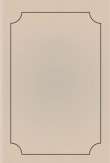You are here
قراءة كتاب Indian Conjuring
تنويه: تعرض هنا نبذة من اول ١٠ صفحات فقط من الكتاب الالكتروني، لقراءة الكتاب كاملا اضغط على الزر “اشتر الآن"
tag="{http://www.w3.org/1999/xhtml}a">My old friend Shah Mahommed, aged 87 years, son of Ghaus Mahommed, who died aged 75 years, and grandson of Nur Mahommed who died at the age of 78 years, All three were itinerant conjurers and had never seen the rope trick
INDIAN CONJURING
CHAPTER I
A COMPARISON
Since the world began Magic and wizardy seem to have held a great fascination for mankind, an example being in the story of the Witch of Endor. That this tendency has in no wise altered is clear from the popularity of conjurors, illusionists, and so called magicians who still, be it East or West, attract an audience so easily and so surely. This little volume is written in the hopes that it may prove of interest to the thousands who reside in India, and those other thousands who, visiting its coral shores from time to time, often discuss in wondering amazement how the Indian conjuror performs his tricks. It is also written to uphold the reputation of the Western conjuror against the spurious ascendancy held by his Eastern confrere.
Before describing the many well known tricks that are shewn by the "house to house" Jadoo-wallah, and explaining how they are done, we will compare the average Indian conjuror with his mystic friends in Europe, America and China.
Let us for a moment picture in our mind's eye the stage and person of the European or American conjuror. A few small tables with spindle legs (upon them a steel frame or so, transparent and decorative) are exposed to our view. The performer appears with rolled up sleeves in close fitting clothes and by the end of his performance has filled the stage with several large flags, a bouquet of flowers and, may be, a beautiful lady, all, possibly produced from a top hat. His performance is given to the accompaniment of amusing patter and is brightened with the colour of the articles he produces.
He may be an illusionist pure and simple and does not indulge in sleight-of-hand at all. In this case the comparison with the Indian Jadoo-wallah is not a fair one, as the latter has not the means to purchase the complicated mechanism necessary for up-to-date illusions as shewn by European magicians.
Whether or no his superior education is the reason, the European conjuror gains in skill and shows his inventive genius as time goes on. His effects are studied, and his paraphernalia embraces more and more varied articles. The disappearance of a Christmas tree with all its candles lighted is an excellent example to what he has risen. He takes an interest in his profession or calling and strives to outdo others in neatness or by inventing an exclusive trick to which his name can be given and handed down to posterity. This may be the result of large fees that can be earned at the "Halls" or by private entertainments by those at the top of the tree. But these fees are open to a conjuror of any nationality, and I am confident that the interest the European takes in his hobby has more to do with his superiority than education and large fees. The ruling Princes of India are very fond of watching a clever conjuror and can pay enormous fees, but no Indian conjuror appears to appeal to them. A Western performer always wants to give his best to his audience and takes a pride in mystifying them. David Devant, who is one of the greatest living exponents has quite recently written an article in the Strand Magazine of his dreams of tricks that he would like to be able to do. To meet the late Charles Bertram "at home" was a study in itself. To have seen him playing, as a child would play, with a pack of cards until he stumbled across a new sleight and watched the enjoyment written all over his face, was a proof of his deep interest in his hobby.
Can anyone imagine an Indian conjuror dreaming of a new trick? "Ghee and khana" (clarified butter and food) form the subject of the majority of his dreams. When he does play with anything it is to caress lovingly the "paisa" or pieces of money that he last earned, not to improve his dexterity but because they will give him a good meal, a cup of arak, (or intoxicating liquor) and a long lazy sleep.
The Chinaman gives his entertainment with his stage well filled with tables covered with gorgeous dragon-be-decked draperies that reach the ground, and behind which useful assistants could be easily concealed. His own garments are roomy and his sleeves could contain a multitude of billiard balls and rabbits. But he gives a showy performance with



